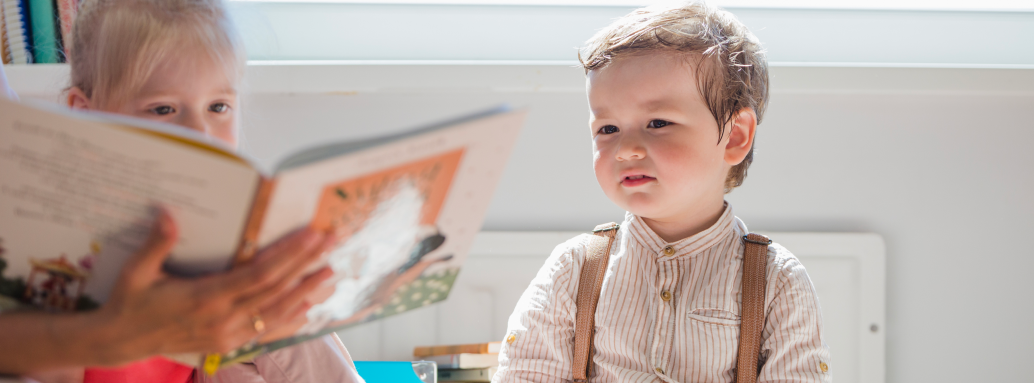Empowering childcare centres with tools to simplify operations and enhance outcomes
Automate payments, manage subsidies, and ensure financial accuracy with ease.
Effortless communication between families and educators for instant updates, messages, collaboration, and conversations.
Track, document, and celebrate every milestone in a child’s journey.
Simplify enrolment, manage waitlists, and track attendance effortlessly.
Streamline scheduling, performance tracking, and team communication.
Keep families informed with real-time updates and daily reports.
Discover how Parent can transform your childcare centre’s operations
Access a variety of tools, guides, and insights to help you get the most out of Parent
Stay updated with industry trends, expert advice, and childcare management tips.
See how childcare centers like yours achieved success with Parent.
Find quick answers to the most common questions about Parent's features and services.
Join live sessions or watch on-demand webinars for in-depth guidance and tips.
Get step-by-step support with articles, guides, and troubleshooting resources.


In today’s fast-paced and interconnected world, the benefits of bilingual education in early childhood development are becoming more apparent. As society grows more diverse and globalized, fostering bilingualism in young children is not just a trend—it’s a crucial skill that offers numerous cognitive, social, and cultural advantages. This article will explore how bilingual education impacts the growth and development of young minds, why it's beneficial, and how parents and educators can implement it effectively.
Bilingual education is more than just teaching kids a second language; it’s about unlocking their cognitive potential, enhancing their social skills, and fostering cultural awareness. From improved problem-solving abilities to better social interactions, the benefits of bilingualism extend far beyond the classroom.
Bilingual education involves teaching children two languages simultaneously or introducing a second language alongside their native one. While some schools may offer bilingual programs, many parents opt to introduce a second language at home through everyday interactions, storytelling, or play.
Early childhood, typically from birth to age 5, is a critical window for language acquisition. During this period, a child's brain is highly receptive to new information, making it easier to learn multiple languages simultaneously. But why is this window so special?
Children’s brains are highly plastic during their early years, which means they can adapt and change rapidly. Learning two languages at a young age helps the brain create more complex neural pathways, leading to stronger cognitive abilities later in life. It’s like building a flexible, multi-lane highway in their brains, compared to a single, slower road.
Children are natural language sponges during their early years. They pick up sounds, words, and grammar rules effortlessly, often without explicit instruction. Bilingual kids may start mixing languages initially, but this is part of the learning process and eventually leads to fluency in both.
One of the most well-documented advantages of bilingualism is its positive effect on cognitive development. Bilingual children tend to perform better on tasks that involve problem-solving, multitasking, and creativity.
Bilingual children are constantly switching between two languages, which strengthens their executive functioning skills. These are the cognitive abilities that help with planning, focusing attention, and juggling multiple tasks. Bilingual kids are like mental gymnasts, capable of thinking flexibly and adapting to new situations with ease.
The ability to think in two languages allows bilingual children to approach problems from different angles. They learn to think outside the box, which improves their critical thinking and problem-solving skills. It’s like giving them two different lenses to view the world—each one offers unique perspectives.
Studies have shown that bilingual individuals are less likely to suffer from cognitive decline and diseases like Alzheimer’s later in life. This is because the mental workout that comes with managing two languages keeps the brain healthier and more resilient over time.
Bilingual education doesn’t just impact a child’s cognitive development; it also plays a crucial role in their social and emotional growth. The ability to communicate in two languages opens doors to diverse social circles and cultures.
Being bilingual often means being bicultural. Children exposed to different languages learn to appreciate different cultures, customs, and perspectives. This cultural awareness fosters empathy and understanding, skills that are increasingly important in today’s global society.
Bilingual children have a natural ability to navigate social situations where more than one language is spoken. This gives them a unique advantage in making friends from different backgrounds, improving their communication skills, and increasing their emotional intelligence. They learn early on that language is a bridge that connects people from all walks of life.
Learning a second language can be challenging, but succeeding in this task gives children a sense of accomplishment. It boosts their confidence, knowing they have a skill that sets them apart. This self-esteem carries over into other areas of their lives, encouraging them to take on new challenges.
Despite its many benefits, bilingual education can present challenges for both parents and educators. However, with the right strategies, these hurdles can be easily overcome.
A common concern is that children will get confused when learning two languages. While some language mixing is normal in the beginning, children quickly learn to differentiate between the two languages. The key is consistency. Parents should designate times or contexts for each language to help children keep them separate.
Parents may worry about finding quality resources to support bilingual education. Thankfully, there are numerous apps, books, and educational programs designed to promote bilingualism in young children. Additionally, communities of bilingual families can offer support and share ideas.
If you’re a parent looking to raise a bilingual child, you’re probably wondering how to get started. Here are some practical tips for making bilingual education a natural part of your child’s life.
The earlier you introduce a second language, the easier it will be for your child to pick it up. Aim for consistent exposure to both languages, whether that’s through daily conversations, songs, or storytelling.
Children learn best when they’re having fun. Incorporate language learning into games, songs, and playtime. The more engaging the process, the more likely your child will stick with it.
If possible, provide opportunities for language immersion. This could mean spending time with family members who speak the second language, joining language playgroups, or even traveling to places where the language is spoken.
Learning two languages can be overwhelming at times, so it’s important to be patient and supportive. Celebrate your child’s progress, no matter how small, and avoid pressuring them to be perfect. Remember, every child learns at their own pace.
While parents play a vital role in bilingual education, schools also have a responsibility to support language learning. Bilingual programs can make a significant difference in a child’s linguistic and academic development.
Many schools offer dual-language programs where students receive instruction in both their native language and a second language. These programs have been shown to improve academic performance, language skills, and cultural understanding.
Teachers need adequate training to support bilingual students effectively. Schools should invest in professional development programs that equip educators with the skills and knowledge they need to create inclusive, supportive bilingual environments.
The impact of bilingual education goes beyond childhood. As bilingual children grow up, they continue to reap the rewards of their early language learning.
Bilingualism has been linked to higher academic achievement and better job prospects. Employers increasingly seek individuals who can speak multiple languages, especially in industries that require communication across borders.
The cognitive advantages of bilingualism don’t stop in childhood. Bilingual individuals often enjoy better memory, enhanced multitasking abilities, and greater cognitive flexibility throughout their lives.
Bilingual education in early childhood is a powerful tool that benefits cognitive, social, and emotional development. By exposing children to two languages early on, we give them the opportunity to think more critically, connect more deeply with others, and succeed academically.
The impact of bilingual education on early childhood development is undeniable. From boosting cognitive function to enhancing social skills, the benefits of bilingualism are far-reaching. By fostering bilingual education in the home and schools, parents and educators can give children a head start in life that goes beyond language itself—it’s a gift of expanded horizons, cultural appreciation, and a brighter future.
Bilingual education can begin as early as infancy. Research shows that children are most receptive to language learning from birth to age three, making this an ideal window to introduce a second language. However, it's never too late to start, as children continue to benefit from bilingual education throughout their early childhood years.
No, bilingual education does not delay language development. While bilingual children may initially mix languages or have a slightly smaller vocabulary in each language compared to monolingual peers, this is a normal part of bilingual development. Over time, bilingual children catch up and often surpass their monolingual peers in various cognitive and linguistic areas.
Parents can support bilingual education at home by providing resources in the second language, such as books, music, and videos. Engaging with language learning apps and platforms, participating in cultural activities, and seeking out native speakers for playdates or conversation practice can also be beneficial. Encouragement and showing interest in the language learning process are key.
Bilingual education does not interfere with academic performance in other subjects. In fact, it can enhance cognitive skills such as problem-solving, critical thinking, and multitasking, which are beneficial across all areas of learning. Bilingual students often show improved focus, memory, and flexibility in thinking, which can contribute to better academic performance overall.
The long-term benefits of bilingual education include advanced cognitive flexibility, improved executive functioning, and greater cultural awareness and sensitivity. Bilingual individuals often have better communication skills, enhanced problem-solving abilities, and a deeper understanding of global perspectives. Additionally, being bilingual can provide significant advantages in the global job market and in personal and professional opportunities throughout life.


